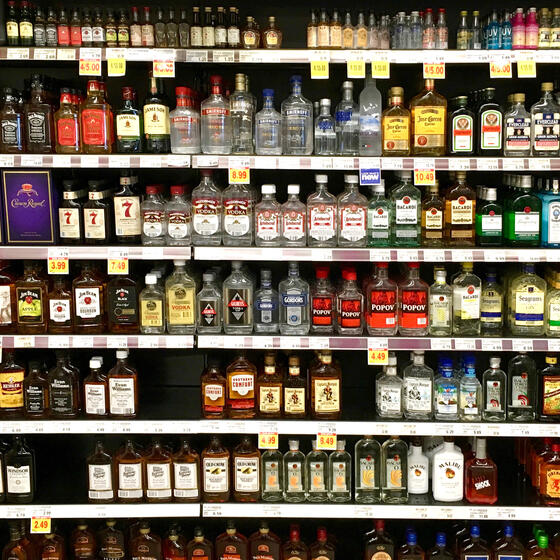Can ‘Sin Taxes’ Do a Better Job?
“Sin taxes” on products like tobacco, gambling, and alcohol seek to both generate revenue for the state and to discourage unhealthy choices. A new study co-authored by Yale SOM’s Katja Seim examines how successful the uniform liquor tax in Pennsylvania is at each of those goals, and concludes that a uniform tax leads to higher prices on products bought disproportionately in high-income areas when compared to a more variable approach, effectively subsidizing liquor consumption in low-income areas.
The price tag on a bottle of vodka or a pack of cigarettes doesn’t only reflect the value of the product to consumers. It also incorporates the goods’ social impact, via the “sin taxes” levied by many states.
Taxes on alcohol, tobacco, gambling, or other vices have a two-fold purpose: increasing a state’s revenue and deterring consumers from using these potentially harmful products. The concept dates back to the late 18th century, when Alexander Hamilton and economist Adam Smith separately proposed taxes on whiskey, rum, and tobacco as a means to increase revenue.
Like other taxes on commodities, sin taxes are generally uniform—the consumer pays the same percentage no matter how expensive the product is. For example, in Pennsylvania, where the state’s Liquor Control Board (PLCB) operates state-run liquor stores, there is a 30% markup on all liquor. Such a tax seems fair and has the benefit of simplicity—but is it the best way to achieve the tax’s dual goals of revenue generation and deterrence?
In a new study, Yale SOM economics professor Katja Seim, Eugenio Miravete of the University of Texas, and Jeff Thurk of the University of Georgia use sales data from Pennsylvania to see whether the uniform tax is having the desired impact.
“Somewhat surprisingly, we found that the single markup of 30% comes quite close to the best one they could have chosen,” she says. But when they compared a uniform tax rate to one that varied by product, they also found that the uniform tax effectively subsidizes low-income consumers and smaller manufacturers—a result that could inform future policymaking.
Seim and her colleagues gathered information on daily alcohol sales in 2003 and 2004, including wholesale prices, quantities, and varieties sold at each of the 624 stores across the state. They classified products into six categories: whiskey, vodka, brandy, cordials, gin, and rum. The team mapped the stores’ street addresses, then turned to the 2000 Census data to identify population demographics near the stores.
Their analysis revealed that stores in neighborhoods with younger, less-educated, and lower-income populations sold more brandy and gin, in smaller, 375-milliliter bottles. Those in higher income neighborhoods sold more vodka, whiskey, and other expensive products, often in 1.75-liter-sized bottles.
The data also showed that low-income consumers have more elastic demand More affluent consumers were less likely to alter their purchasing behavior based on a price increase.
Knowing how consumers responded to changed prices and how firms adjusted their pricing, the researchers went on to model how things might play out under different tax scenarios. Since customizing taxes to hundreds of individual products would be too complex, they tested a system that varied based on two parameters—the size of a bottle and kind of alcohol.
When they changed the uniform tax to one that aimed to maximize revenue by varying taxes based on these two factors, they found that products such as brandy or gin—those typically favored by lower-income consumers—were marked up more than high-end whiskeys or vodkas.
“Effectively, by fixing the tax rate to be the same across products, you are ‘protecting’ consumers who buy lower-end products and are more sensitive to fluctuations.”
So while the uniform markup might seem at first glance to be regressive, it taxes the goods preferred by lower-income buyers at a lower rate than would be the case under a variable tax. “Effectively, by fixing the tax rate to be the same across products, you are ‘protecting’ consumers who buy lower-end products and are more sensitive to fluctuations,” Seim says. “This is a very different interpretation of fairness. What we find is the single markup is like a progressive tax, because it allows poor consumers to pay less.”
In addition to its effects on consumers, a single markup also has a surprising effect on small manufacturers, many of them local, who compete with bigger firms in the liquor industry. In Pennsylvania, many lower-priced products are made by small firms such as Sazerac or the Philadelphia-based distillery Jacquin. Unlike larger companies like Bacardi or Diageo, these companies only produce a limited range of niche liquors, and their success depends on sales of lower-end products. A uniform tax code that under-taxes these products could also help keep these firms’ profits up. “These nuances weren’t obvious in earlier discussions,” Seim says. “It’s important to explicitly recognize these details and think about how different demographic groups purchase products and react to taxes.”
The analysis shows how a uniform tax benefits lower-income consumers and local businesses. But of course, there’s a flip side. A tax that penalized these purchases could result in lower consumption of alcohol overall—and thus, lower costs associated with healthcare and other downsides of drinking alcohol. “This single markup makes it much harder to reduce consumption uniformly,” Seim says.
The implications extend far beyond alcohol or the confines of a single state, she adds. Nicotine, fast food, sugary candy or soda and other products deemed undesirable or harmful are often slapped with “sin taxes” meant to discourage their consumption and increase revenue.
The single tax policy implicitly targets high-income consumers, whose purchases are taxed more under this system, according to Seim. “But it keeps prices artificially low for all the remaining demographic groups,” she adds. “If the objective of these sin taxes is really to discourage consumption and reduce external costs, it’s important to consider how a single markup affects different consumers across demographic groups.”
